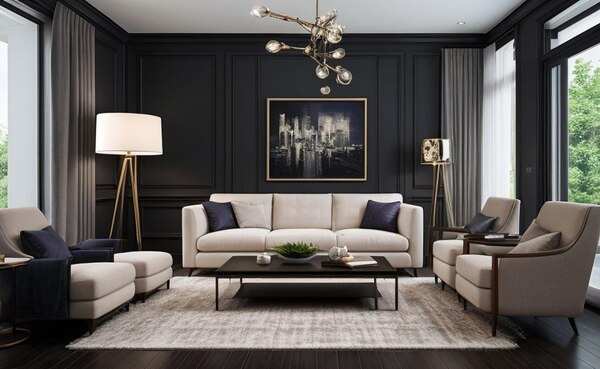The Importance of Color in Interior Design
Color plays a pivotal role in the realm of interior design, dramatically influencing the ambiance and functionality of any space. By carefully selecting and combining colors, interior designers can evoke specific moods, improve spatial perception, and even alter how a space is used.
At the most fundamental level, color affects our emotions and behaviors. Warm colors like red, orange, and yellow can create feelings of warmth and coziness but can also stimulate energy and activity. This makes them excellent choices for social areas like living rooms or kitchens. Conversely, cool colors such as blue, green, and purple are known for their calming effects, making them ideal for bedrooms, bathrooms, and other spaces meant for relaxation and tranquility.

In addition to emotional impact, color can significantly affect the perception of space. Light and neutral shades can make a small room appear larger and more open, while darker colors can make a large space feel more intimate and cozy. This optical illusion is particularly useful in urban settings where maximizing space is often a necessity.
Moreover, color can serve functional purposes within a design. For example, a brightly colored accent wall can draw attention to specific architectural features or focal points within a room. Similarly, different shades can be used to differentiate various functional areas within a single, open-plan space, such as distinguishing a dining area from a living area without the need for physical barriers.
The choice of color also extends to the selection of accessories and furnishings. Textiles, wall art, furniture, and even small decor items contribute to the overall color scheme, which must be cohesive and balanced. An inconsistent color palette can result in a chaotic, disjointed space, whereas a well-thought-out color scheme can bring harmony and a sense of unity to the design.
Additionally, cultural and personal influences often dictate color preferences. For instance, certain colors may carry specific meanings or associations in different cultures. In some Eastern cultures, white is the color of mourning, while in Western traditions, it represents purity and new beginnings. Likewise, individual preferences can reflect personal tastes and experiences, which should be taken into consideration in residential designs to create a space that feels truly personal and comfortable.
Technology has also revolutionized the way color is used in interior design. With the advent of digital tools and software, designers can experiment with color palettes virtually, saving time and allowing for greater creativity. These tools enable envisioning how different colors will look in actual spaces, aiding in making more informed decisions.
However, despite the advances in technology, the fundamentals of color theory—understanding how colors interact, complement, or contrast with one another—remain unchanged. Knowledge of primary, secondary, and tertiary colors, along with the use of tools like color wheels, helps designers create balanced and aesthetically pleasing environments.
In conclusion, color is not just a superficial choice in interior design but a critical element that profoundly affects both the look and feel of a space. By leveraging the psychological, perceptual, and functional aspects of color, interior designers can create environments that are not only beautiful but also serve their intended purpose effectively. As with any art form, the key is to use color thoughtfully and intentionally to b8iyb any space into a harmonious, welcoming, and functional living area.